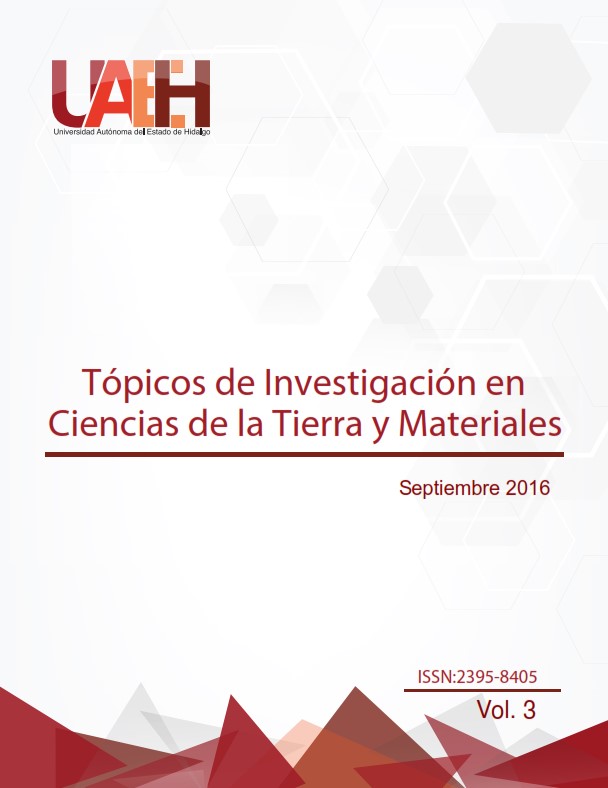Caracterización electroquímica de nanopartículas de plata (AgNPS) obtenidas mediante química verde
DOI:
https://doi.org/10.29057/aactm.v3i3.9806Palabras clave:
Nanopartículas, Electroquímica, Síntesis, Verde, CupressusResumen
En los últimos años la síntesis verde de nanopartículas metálicas ha tenido un gran auge debido al uso de extractos vegetales, que han mostrado su viabilidad frente a los métodos físicos y químicos con el uso de extractos de plantas. Por lo tanto, surge la necesidad de identificar algunas especies que posean la capacidad de para la síntesis de nanopartículas metálicas. El extracto de la especie Cupressus govenianaque se caracterizó por FTIR, indicando la presencia de grupos funcionales carboxilo (-C= O), hidroxilo (-OH) y amino (-NH) atribuidos a las proteínas y compuestos con grupos terpenicos los cuales se les atribuye la capacidad como agentes reductores de los iones Ag+. La formación de las nanopartículas de plata fue caracterizada por espectroscopia de UV-Vis, observándose el plasmon característico de absorbancia entre los 418-430 nm. Esto reveló la reducción de Ag+ a plata metálica Ag0. Una muestra de la dispersión coloidal obtenida se caracterizó por SEM-EDS, donde se observaron partículas que presentan una morfología esferoidal. Mediante la caracterización electroquímica se observaron procesos de reducción en el intervalo de potencial de -210 a -580 mV vs ECS, en las diferentes concentraciones de Ag+; los cuales son atribuidos al depósito plata sobre el electrodo de carbón vítreo. Por lo que se demuestra que mediante condiciones de baja temperatura y presión atmosférica normal, es viable la obtención de nanopartículas a tiempos cortos.
Descargas
Información de Publicación
Perfiles de revisores N/D
Declaraciones del autor
Indexado en
- Sociedad académica
- N/D
Citas
[2] Mandal D, Bolander ME, Mukhopadhyay D, Sarkar G, Mukherjee P, (2006), The use of microorganisms for the formation of metal nanoparticles and their application, Appl Microbiol
Biotechnol 69: 485–492. DOI 10.1007/s00253-005-0179-3
[3] Reza Ghorbani H, Akbar Safekordi A, Attar H, and Rezayat Sorkhabadib SM, (2011), Biological and Non-biological Methods for Silver Nanoparticles Synthesis, Chem. Biochem. Eng. Q. 25 (3) 317–326
[4] Kaushik N. Thakkar, MS, Snehit S. Mhatre, MS, Rasesh Y. Parikh MS, (2010) Biological synthesis of metallic nanoparticles, Nanomedicine: Nanotechnology, Biology, and Medicine 6 257–262, doi:10.1016/j.nano.2009.07.002
[5] Gavahane A, Padmanabhan P, Kamble SP & Jangle SN (2012), Synthesis of Silver Nanoparticles Using Extract of Neem Leaf and Triphala and Evaluation of their Antimicrobial Activities, Int. Journal of Pharma and Bio Sciences, 3(3): P 88 – 100
[6] Okafor F, Janen A, Kukhtareva T, Edwards V, Curley M, (2013), Green Synthesis of Silver Nanoparticles, Their Characterization, Application and Antibacterial Activit, International Journal
of Environmental Research and Public Health, 10, 5221-5238 doi:10.3390/ijerph10105221
[7] Dubey SP, Lahtinenb M, Sillanpää M, (2010), Green synthesis and characterizations of silver and gold nanoparticles using leaf extract of Rosa rugosa, Colloids and Surfaces A: Physicochem. Eng. Aspects 364 34–41, doi:10.1016/j.colsurfa.2010.04.023
[8] Awwad AM, Salem NM, (2012). Green Synthesis of Silver Nanoparticles by Mulberry Leaves Extract, Nanoscience and Nanotechnology, 2(4): 125-128 DOI: 10.5923/j.nn.20120204.06
[9] Mariselvam R, Ranjitsingh AJA, Usha Raja Nanthini A, Kalirajan K, Padmalatha C, Mosae Selvakumar P, (2014), Green synthesis of silver nanoparticles from the extract of the inflorescence
of Cocos nucifera (Family: Arecaceae) for enhanced antibacterial activity, Spectrochimica Acta Part A: Mol. and Biomol. Spectro; 129: 537–541, doi: 10.1016/j.saa.2014.03.066
[10] Dwivedi AD, Gopal K, (2010), Biosynthesis of silver and gold nanoparticles using Chenopodium album leaf extract, Colloids and Surfaces A: Physicochem. Eng. Aspects 369 27–33,
doi:10.1016/j.colsurfa.2010.07.020
[11] Hogan M. 2012. iNatualista. Comisión Nancional para el Conocimiento y uso de la Biodiversidad y uBio. conabio.inaturalist.org/taxa/325546-Cupressus-goveniana-pigmea
[12] Selim SA , Adam ME, Hassan SM, and Albalawi AR, (2014), Chemical composition antimicrobial and antibiofilm activity of the essential oil and methanol extract of the Mediterranean cypress (Cupressus sempervirens L.), BMC Complementary and Alternative Medicine, 14:179 http://www.biomedcentral.com/1472-6882/14/179
[13] Zavarin E, Lawrence L and Thomas MC (1971), Compositional Variations of leaf Monoterpenes in Cupressus Macrocarpa, C. Pygmaea, C. Goveniana , Phytochemistry, Vol. 10, pp. 379 to 393. Pergamon Press. Printed in England.
[14] Nouri AB, Dhifi W, Bellili S, Ghazghazi H, Aouadhi C, Chérif A, Hammami M, and Mnif W, (2015), Chemical Composition, Antioxidant Potential and Antibacterial Activity of Essential Oil
Cones of Tunisian Cupressus sempervirens, Hindawi Publishing Corporation Journal of Chemistry, Volume, http://dx.doi.org/10.1155/2015/538929
[15] Natarajan S, Murti VVS, and Seshadri TR, (1970), Biflavones of Some Cupressaceae Plants, Phytochemistry Vol. 9, 575-579. Pergamon Press. Printed in Endand.


















